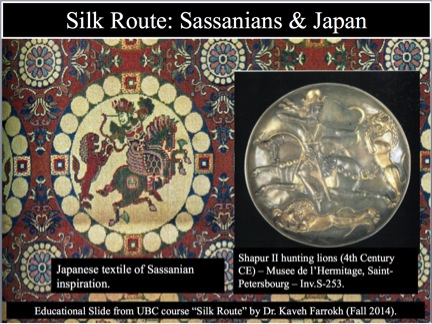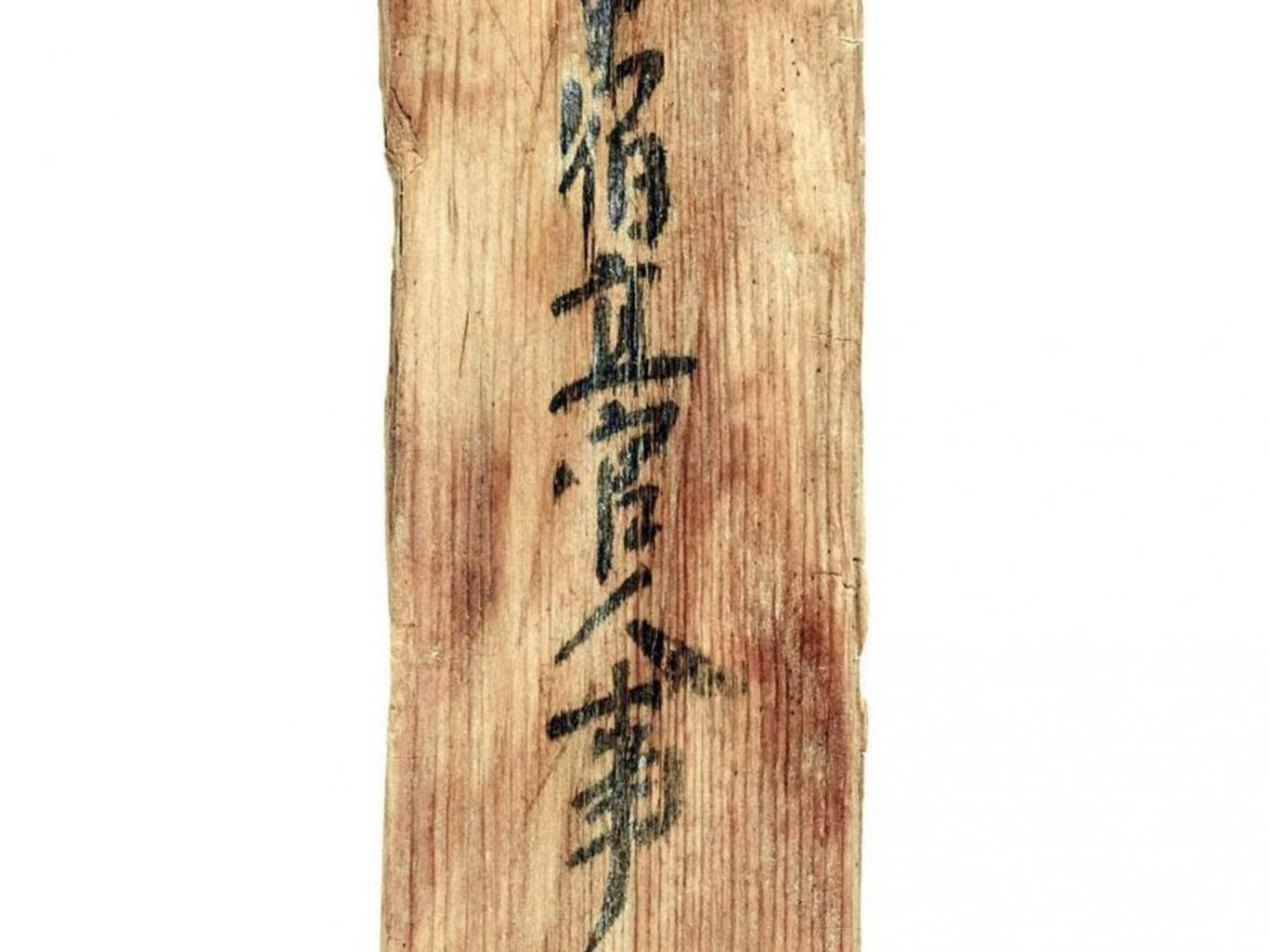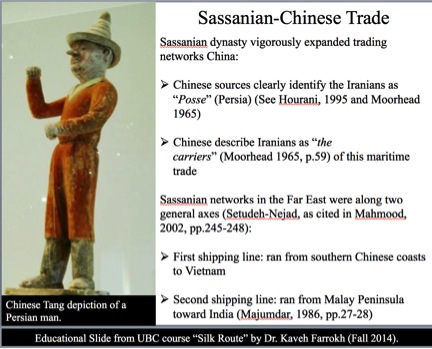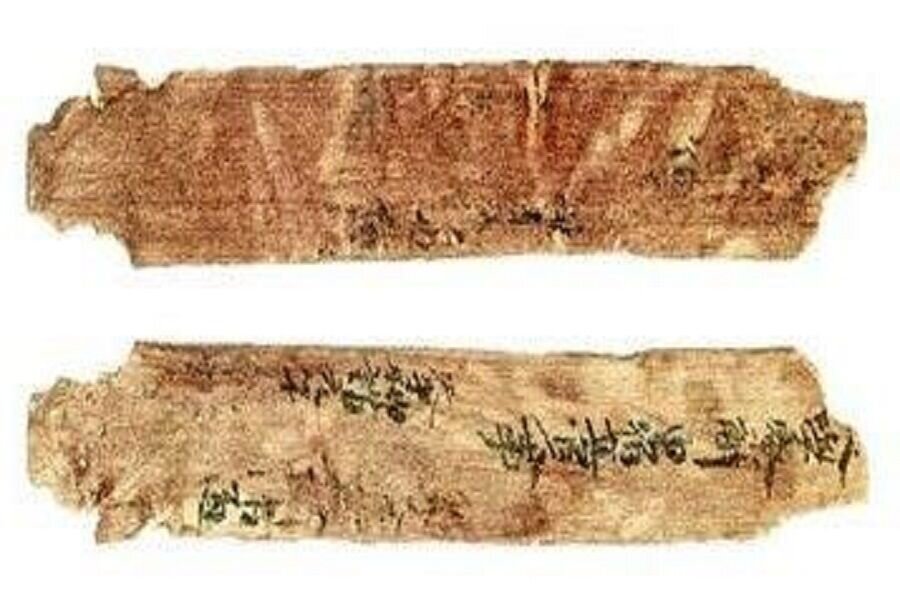Kindly note that: (a) the text printed below has been slightly edited from its original version in the Tehran Times and (b) all images and accompanying captions posted below do not appear in the original Tehran Times report.
==================================================================================
Japan has unveiled a rare discovery of ties between the then mighty empire of the East and people from the then Persia (now called Iran). Newly-found results of a research by the Nara National Research Institute for Cultural Properties on previously discovered objects reinforces the idea that at least one Persian man lived in the ancient city of Nara in the eighth century CE.

Sassanian influences upon Japanese arts: the case of the metalwork plate of Shapur II hunting lions (Hermitage Museum, St. Petersburg – Inv. S-253) and motif-parallels in Japanese textile arts (Source: Fall 2014 course on the Silk Route at the University of British Columbia).
A team of Japanese researchers has succeeded to read the notes of an ancient wooden tablet, which dates back to 765 CE, using infrared imaging techniques, the news agency reported based on Japanese sources. The tablet bears a name, attributed to a Persian man, who is believed to be an educator or trainee at the Japanese imperial court of the times. While it’s long been accepted that Japan enjoyed trade connections with countries and cultures all along the Silk Road, records of these exchanges in ancient Japan are sparse and hard to come by, according to Japanese sources. Present-day Iran and Japan were known to have had direct trade links since at least the 7th century, but new testing on a piece of wood — first discovered in the 1960s — suggest broader ties. At the time, wooden tablets (rather than paper) were commonly used for record-keeping.

Scientists analyzed carvings on the wood using infrared imaging technology, which appeared to name a Persian lecturer who worked at a facility where government ministers were trained in the former Japanese capital of Nara.
While the ancient city no longer exists, much of the remains of Heijo-kyo have been excavated over the past 70 years. Today, the area serves as a large civic park located just to the west of Nara’s city center. It should come as no surprise that in the 8th century, someone from Persia would end up living and working in Japan, which was located at the end of the Silk Road. The route connected Japan with countries and regions far to the west, including Persia and the Byzantine Empire. Ancient Japanese culture incorporated a continuum of cultural influences from south and central Asia, as well as from Persia. Many deities and demigods in the Japanese Buddhist pantheon had their origins from other parts of Asia. This statue of an Asura, dating from the 12th century, is thought to have its origins in part from a similar ancient Persian deity.

Sassanian and Soghdian merchants were actively trading with China, a process that led to Iranian links with ancient Korea and Japan (Source: Fall 2014 course on the Silk Route at the University of British Columbia).




